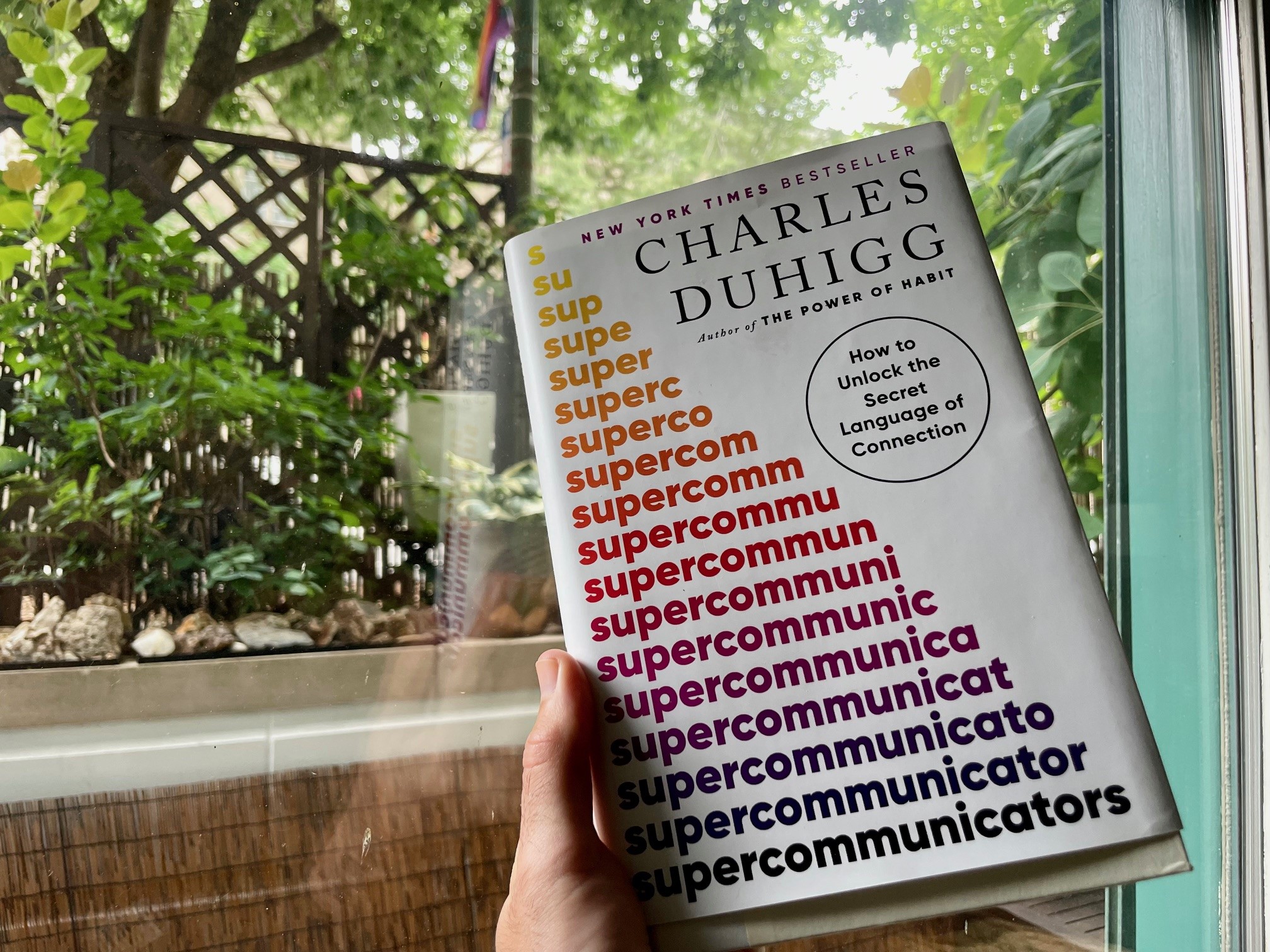
Are you a super communicator? No? Are you familiar with Supercommunicators by Charles Duhigg? No?! This best-selling book is our latest book club pick. All of us at Emerson Human Capital are reading it, section by section, and meeting to discuss our takeaways.
As consultants in the world of Learning & Development and Change Management, we have to be good listeners and ask thoughtful, appropriate questions. It’s how we ensure we deliver on the real needs of our clients. So, we’d like to think we are already super communicators – but are we?
Here’s what we’ve learned so far by reading and discussing the book.
A Few Key Ideas
Three Types of Conversations
Duhigg organizes his book around three main types of conversations:
- What is this really about?
- How do we feel?
- Who are we?
Understanding the answers to each of these questions ensures participants are engaging in the same type of conversation.
Think about how often you or your team have jumped into a discussion out of habit or urgency (with or without an agenda), only to walk away wondering, “What just happened?” or feeling that you didn’t get your needs met. Recognizing and acknowledging the type of conversation helps avoid confusion and inefficiency.
Four Rules of a Learning Conversation
- Pay attention to what kind of conversation is happening.
- Share your goals and ask what others are seeking.
- Ask about others’ feelings and share your own.
- Explore whether identities are important to this discussion.
Quiet Negotiations
Duhigg tells us, “Within every conversation there is a quiet negotiation, where the prize is not winning, but rather determining what everyone wants, so that something meaningful can occur.” This quiet negotiation focuses both on what everyone wants and on the rules for making decisions together. He frames negotiation as a “subtle give-and-take” to ensure everyone wins, rather than the more common understanding of negotiation as a zero-sum game.
Neural Entrainment
It seems at our cores, Emersonians are kind of nerds. One of our loves is neuroscience. So, imagine our fascination when Duhigg introduced the concept of “neural entrainment.” He says, “At the heart of every conversation is the potential for neural synchronization,” which is an alignment between speaker and listener that is a key to the effectiveness of the communication.
Our Questions and Challenges
Sharing to Connect vs. Shifting Focus
At Emerson, we love to use the power of storytelling. Duhigg uses real-life stories to teach his concepts. Early in the book, he describes how a CIA agent learned to build and recruit key resources through sharing personal feelings and vulnerabilities.
When our team met, we paused to debate this further. After all, it seems every active listening principle tells us to keep the focus on the speaker and not grab the spotlight. We were left wondering how these concepts peacefully co-existed. (Spoiler alert: Duhigg dives into this further in section two of his book.)
The Post-Pandemic Problem
How do we overcome the challenges of connecting in a post-pandemic, more remote culture? Supercommunicating is about connecting. However, to our team it feels even harder than ever to make connections. One of us said, “Things seem so much more transactional.”
We had a few ideas to help overcome this challenge:
- Go to meetings a bit earlier and chat with those early to join.
- Turn your cameras on. See and be seen.
- Use humor. Share laughs, person to person. Be human together.
Manipulation?
Duhigg uses a case study to demonstrate the concepts of super communicating. The example is based on a jury in deliberations. As we read how one jury member applied super communicating principles, we could see how the minds of other jurors were changed.
We wondered whether supercommunicating was simply a form of masterful manipulation. As we talked, we decided it’s more about drawing out what really matters to other people — uncovering what they value and want. Duhigg helps us see past a “zero sum game” to a negotiation experience in which the pie gets bigger and everyone wins.
Simple Ways We’re Becoming Super Communicators
Get past: “I have an agenda and I need to get X, Y, and Z out of this meeting.” This doesn’t create strong relationships. Let go of your agenda and thoughts and be mindful and present, so you can actually read the people and what they need. It is important to get to the objective, but strong connections better in long-run for project.
Ask upfront: “What do you want to get out of this meeting? Use this with internal teams and with clients. Co-create a plan for the agenda. Even start with yourself to prepare for conversations. Duhigg suggests answering these questions first:
- What are two topics you most want to discuss?
- What is one thing you hope to say that shows what you want to talk about?
- What is one question you will ask that reveals what others want?
Adopt: Help, Hear, Hug? Clarifying the conversation means recognizing what each participant needs. As Duhigg says, “Different needs require different types of communication, and those different kinds of interaction – helping, hugging, hearing – each correspond to a different kind of conversation.” Is it a practical conversation (helped)? Emotional (hugged)? Or social (heard)?
Establish the shared language to help define what kind of conversation is really happening. Get aligned right away. As our team said, “Why not? That way, we’re having the same conversation!”
Intrigued by some of these concepts? Stay tuned for Are You a Super Communicator? Part 2 to find out what we learned from the rest of the book.



